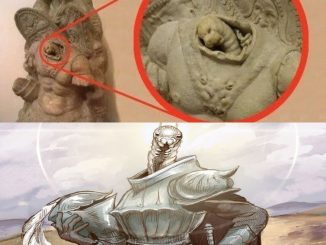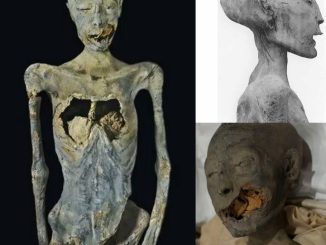Have you ever heard of the “The Hasanlu Lovers?” If not, don’t be too quickly seduced by the exotic and romantic sounding moniker this phenomenon has been awarded. Colorful and amorous images are probably being aroused in your mind after hearing the name of these passionate sounding lovers. But in reality, the “show” is a somewhat more macabre. The Hasanlu Lovers consists of a picture showing two skeletons apparently sharing a tender kiss. These 2,800-year-old remains should not be to be confused for the similar, though even longer-lasting embrace of ‘ The Lovers of Valdaro’.

The Site of Hasanlu
Teppe Hasanlu is an archaeological site of an ancient city located in northwest Iran. The site was inhabited continuously from the 6th millennium BC to the 3rd century AD and was excavated for ten seasons between 1956 and 1974 by a team of researchers from the Penn Museum, University of Pennsylvania and the Metropolitan Museum. Hasanlu was destroyed by a fire at some point, as evidence of this conflagration was discovered on the High and Low Mound during the excavation works.
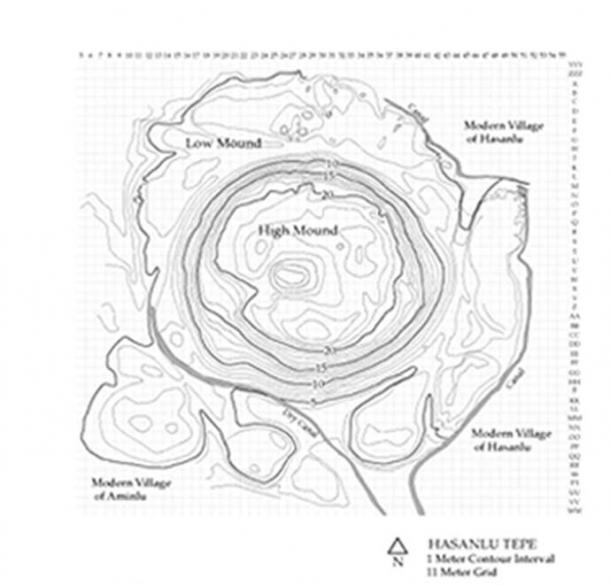
Sketch map of Hasanlu Tepe, located south of Lake Urmia in what is now the Western Azerbaijan Province of Iran. (Penn Museum)
The destruction took place back in 800 BC and it marked the beginning of the Iron IVA period. The nature of this devastation had the consequence of freezing one layer of the city in time, providing researchers with incredibly well-preserved constructions, artifacts, and skeletal remains from the victims and enemy combatants of the attack. Two of the skeletal remains include the legendary “Hasanlu Lovers.”
The “2,800 Years Old Kiss”
The human remains of the “Hasanlu Lovers” were found in a bin with no objects. The only feature found is a stone slab under the head of the skeleton on the left hand side. The discovery was made by a team of archaeologists from the University of Pennsylvania led by Robert Dyson back in 1972. The infamous picture of the Hasanlu Lovers shows two skeletons buried in ground, appearing to kiss each other.
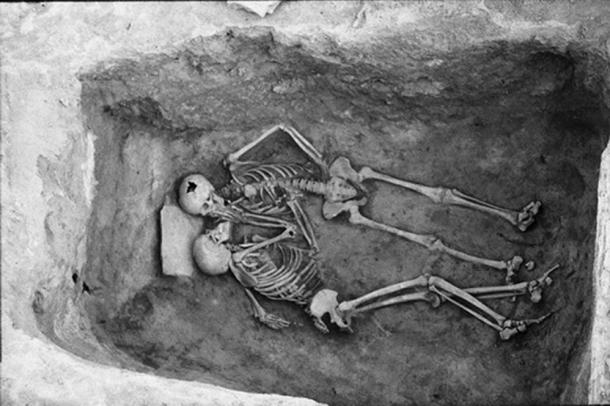
Hansanlu Lovers skeletons in their sparse grave – Penn Museum (Fair use)
Previously on display at the Penn Museum from the mid-1970s until the mid-1980s, the genders of the two skeletons have been the subject of much debate. Despite many researchers suggesting that the remains of both individuals belong to males, there are as many scientists who have concluded that the individual on the left was a female. According to Penn Museum, the physical characteristics for sex determination are less clear of the individual on the left, as it possesses some traits that are masculine in form and others that are more feminine or neutral. The individual on the left – whose sex isn’t defined with certainty – was around 30–35 years old at the time of death, while the individual on the right is believed to have been a young male of around 20-22 years of age.
The two skeletons are close together facing each other, while the “female” skeleton on the left reaching out its right hand to touch the face of her lover on the right. They both have their arms around each other and have clear signs of severe injury and trauma on their bodies sustained around the time of their death. Experts believe that they died together by asphyxiation during the destruction of the Teppe Hasanlu citadel.
Neolithic Romeo and Juliet? The Star-Crossed Lovers of Valdaro
If you thought that the Hasanlu Lovers is a unique case involving romance between skeletons, then you have probably missed our previous article on the “Lovers of Valdaro.” For 6,000 years, two young lovers had been locked in an eternal embrace, hidden from the eyes of the world. Despite their embrace lasting six millennia, the Lovers of Valdaro only became known ten years ago (2007), when their tomb was discovered near Mantua, in the northern region of Lombardy.
Neolithic Romeo and Juliet?
The Star-Crossed Lovers of Valdaro Archaeologists Discover Rare Bronze ‘Lovers’ Coin’ Depicting Mark Antony and Cleopatra Who Was St Dwynwen and How is She Associated with St Valentine?
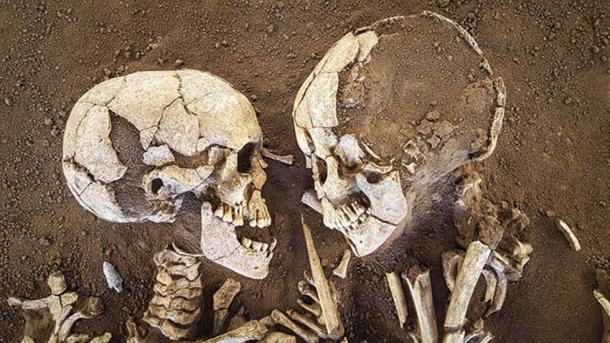
The Lovers of Valdaro (CC BY-SA 4.0)
Digging in the village of Valdaro, a team of archaeologists led by Elena Maria Menotti found a double burial: a young man and woman considered to be about 20 years of age, huddled close together, face to face, their arms and legs entwined, as if they were embracing. What’s even more impressive, double burials from the Neolithic period are very uncommon, and the position of the couple is certainly unique. Furthermore, it is the only example of a double burial in Northern Italy found to date. When the “lovers” were discovered, photos of their embrace were published on media worldwide causing great excitement, especially since the discovery took place near Valentine’s Day.
Historians have not been able to determine how the two died, but, in popular imagination, the couple have come to symbolize Romeo and Juliet of a prehistoric age, star-crossed lovers who took their own lives. This theory is helped along by the fact that Shakespeare’s Romeo and Juliet was set in nearby Verona, that Romeo was exiled to Mantua, where he was told that Juliet was dead, and that Giuseppe Verdi’s opera Rigoletto, another story of star-crossed love and death, was set in Mantua too.
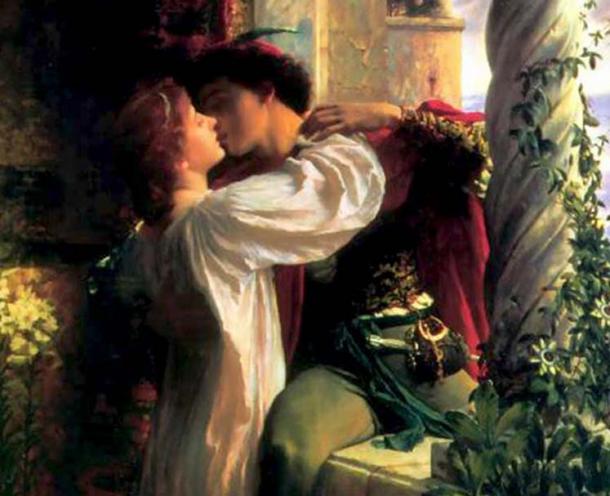
Detail of Romeo and Juliet by Frank Dicksee (Public Domain)
Questions About the Hasanlu Lovers Will Continue
Even though researchers have not yet been able to determine the causes of death for the Lovers of Valdaro, there are many more puzzles and questions concerning them about the Hasanlu Lovers. Other than the already mentioned gender dispute, historians are not sure why the two came to be in the bin, even though they speculate that they were probably hiding during the final sacking of Hasanlu. Historians suggest that the famous couple, as well as other people at the site, were most likely victims of a vicious and interpersonal violence. However, all these theories are just theories for now and until enough evidence is discovered, the Hasanlu human remains will continue to be a subject of debate and research, as a collection of scientists and students from every corner of the planet will continue visiting the Penn Museum to study the fascinating collection.
